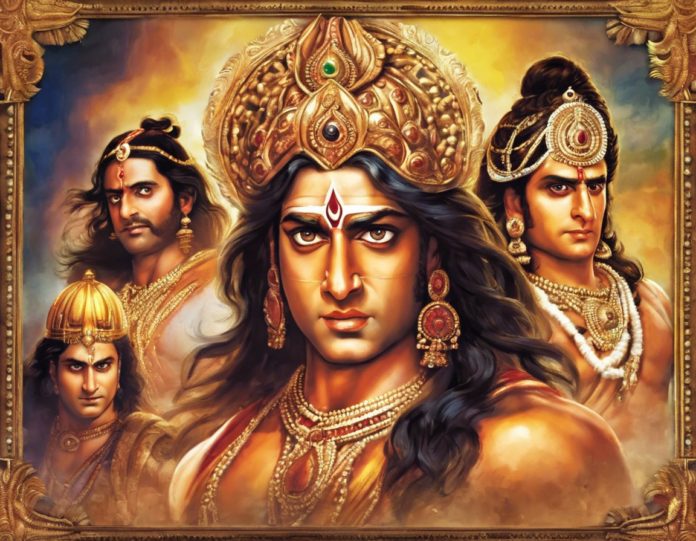The Indian epic of Mahabharata is one of the most revered and influential texts in Hindu mythology and literature. Comprising over 100,000 verses, the Mahabharata narrates the story of the Kuru dynasty and the great Kurukshetra War. With numerous subplots, characters, and moral dilemmas, the epic provides a profound glimpse into the complexities of human nature and the cosmic order. Mahabharata holds immense cultural, religious, and philosophical significance in India and continues to captivate audiences worldwide.
In this comprehensive guide, we will delve into the Mahabharata all episodes, providing an overview of the key events, characters, and themes that make this epic timeless and universal.
The Origin and Background of Mahabharata
The Mahabharata is traditionally attributed to the sage Vyasa and is believed to have been composed between 400 BCE and 400 CE. The epic is divided into 18 books or parvas, each dealing with a specific phase of the narrative. The main storyline revolves around the conflict between the Pandavas and the Kauravas, two branches of the Kuru dynasty, over the kingdom of Hastinapura.
The Kurukshetra War
The central event of the Mahabharata is the Kurukshetra War, a colossal battle fought between the Pandavas, led by Arjuna, and the Kauravas, led by Duryodhana. The war lasts for 18 days and culminates in the victory of the Pandavas but at a great cost in terms of lives and moral ambiguity.
Key Characters in Mahabharata
Pandavas
- Yudhishthira: The eldest Pandava known for his righteousness and adherence to dharma.
- Bhima: Known for his immense strength and valor in battle.
- Arjuna: A skilled archer and the central character of the Bhagavad Gita.
- Nakula and Sahadeva: The twin brothers known for their loyalty and expertise in warfare.
Kauravas
- Duryodhana: The eldest Kaurava and chief antagonist of the Pandavas.
- Dushasana: Known for his role in the disrobing of Draupadi.
- Karna: A key ally of Duryodhana and rival of Arjuna, known for his tragic fate.
Themes in Mahabharata
Dharma and Moral Ambiguity
The Mahabharata grapples with the complexities of dharma (duty/righteousness) and portrays characters who navigate moral dilemmas in the face of conflicting duties and loyalties.
Karma and Fate
The concept of karma, the law of cause and effect, is central to the Mahabharata, wherein characters face the consequences of their actions, both past, and present.
Family and Relationships
The epic explores intricate family dynamics, rivalries, and friendships, showcasing the bonds that shape human interactions.
Lessons from Mahabharata
Importance of Righteousness
The Mahabharata underscores the importance of upholding righteousness and dharma, even in the face of adversity.
Consequences of Actions
Through the characters’ journeys, the epic teaches the enduring lesson that every action has consequences, which must be faced with equanimity.
Unity and Brotherhood
Despite their trials and tribulations, the Pandavas exhibit unity and brotherhood as a source of strength and resilience.
Adaptations and Influence
The Mahabharata has inspired countless adaptations in various art forms, including literature, theater, television, and cinema. Notable retellings include the TV series “Mahabharat” and acclaimed novels like “The Palace of Illusions” by Chitra Banerjee Divakaruni.
FAQs (Frequently Asked Questions)
1. What is the Bhagavad Gita, and why is it important in the Mahabharata?
The Bhagavad Gita is a sacred Hindu text that forms part of the Mahabharata, specifically the Bhishma Parva (Book of Bhishma). It is a philosophical dialogue between Lord Krishna and Arjuna on the battlefield of Kurukshetra, addressing profound questions on duty, righteousness, and the nature of existence.
2. Who is Draupadi, and what is her significance in the Mahabharata?
Draupadi is the wife of the five Pandava brothers and plays a crucial role in the epic. Her humiliation in the Kuru court and subsequent vow for vengeance symbolize defiance against injustice and the struggle for dignity.
3. What is the moral of the Mahabharata?
The Mahabharata conveys multiple moral lessons, emphasizing the primacy of righteousness, the consequences of actions, the inevitability of fate, and the virtues of unity and kinship.
4. How does the Mahabharata influence contemporary society and culture?
The Mahabharata continues to resonate in modern society, shaping moral discourse, political narratives, and artistic expressions that explore timeless themes of conflict, duty, and human nature.
5. Are there variations in the retelling of the Mahabharata across different regions and languages?
Yes, the Mahabharata has been retold and adapted in diverse regional languages and cultural contexts, giving rise to multiple interpretations, additions, and nuances that enrich its vast narrative tapestry.
Conclusion
The Mahabharata stands as a monumental epic that transcends time and space, offering a profound exploration of human virtues, vices, and the eternal struggle between good and evil. Its enduring relevance lies in the timeless wisdom it imparts and the complex characters that mirror the depths of human experience. As readers and enthusiasts engage with the Mahabharata all episodes, they embark on a transformative journey through the epic’s moral landscape, guided by the eternal quest for truth, righteousness, and inner wisdom.




